Lenovo ThinkSystem SR630 review
Lenovo’s ThinkSystem SR630 is a space-saving 1U rack server with plenty of room for growth
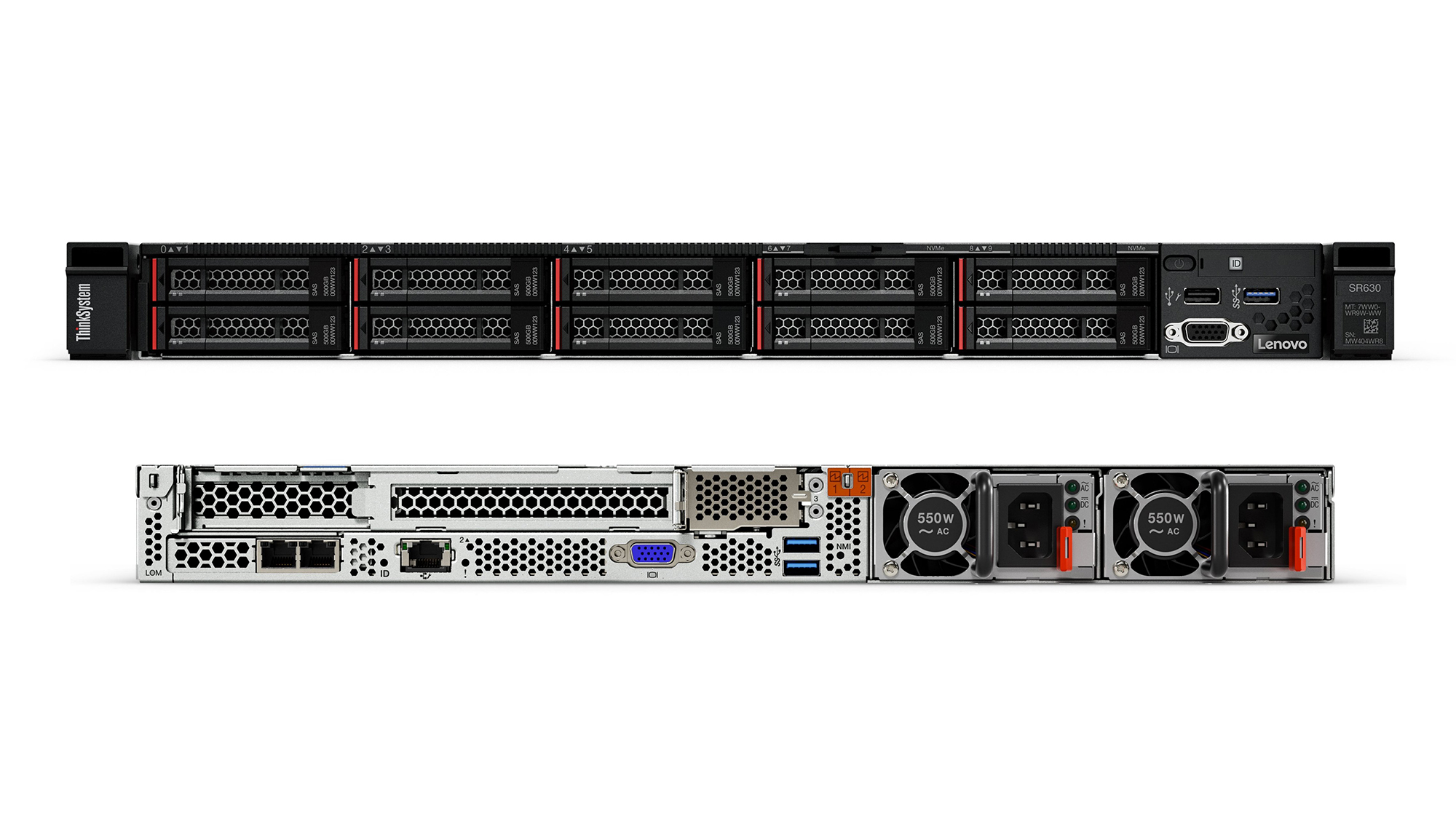

A powerful and versatile 1U Xeon Scalable rack server capable of handling the demands of SMBs and enterprises alike
-
+
Great value, Xeon Scalable CPUs, Plenty of storage choices, Integral NVMe ports, Slick XCC remote management
-
-
Highest core CPUs restrict storage options

Lenovo's latest ThinkSystem server family is its most ambitious launch yet and in this exclusive review we bring you a first look at its new 1U rack workhorse. Covering SMBs to data centres, the ThinkSystem SR630 is designed to deliver a solid mix of reliability, performance and expansion potential.
Replacing Lenovo's elderly System x3550 M5, the SR630 offers a big boost in performance with support for Intel's Xeon Scalable CPUs. Lenovo has redesigned the server's cooling so it can support every CPU model from the budget-priced Bronzes to the core-heavy Platinums.
Memory capacity won't be an issue either, as its 24 DIMM slots support 768GB of DDR4 RDIMMs or 1.5TB of LR-DIMMs and can now handle up 3TB of 3DS (three-dimensional stacked) RDIMMs. Storage also gets an update and the chassis offers a choice of LFF or SFF drives bays plus up to four PCIe NVMe SSDs and a rear bay with room for two more SFF drives.
Remote server management gets a major overhaul as the SR630 sports Lenovo's new XCC (XClarity Controller) chip. It delivers a radically improved web console offering a wealth of information about server operations, essential OS deployment tools and full access for remote configuration.
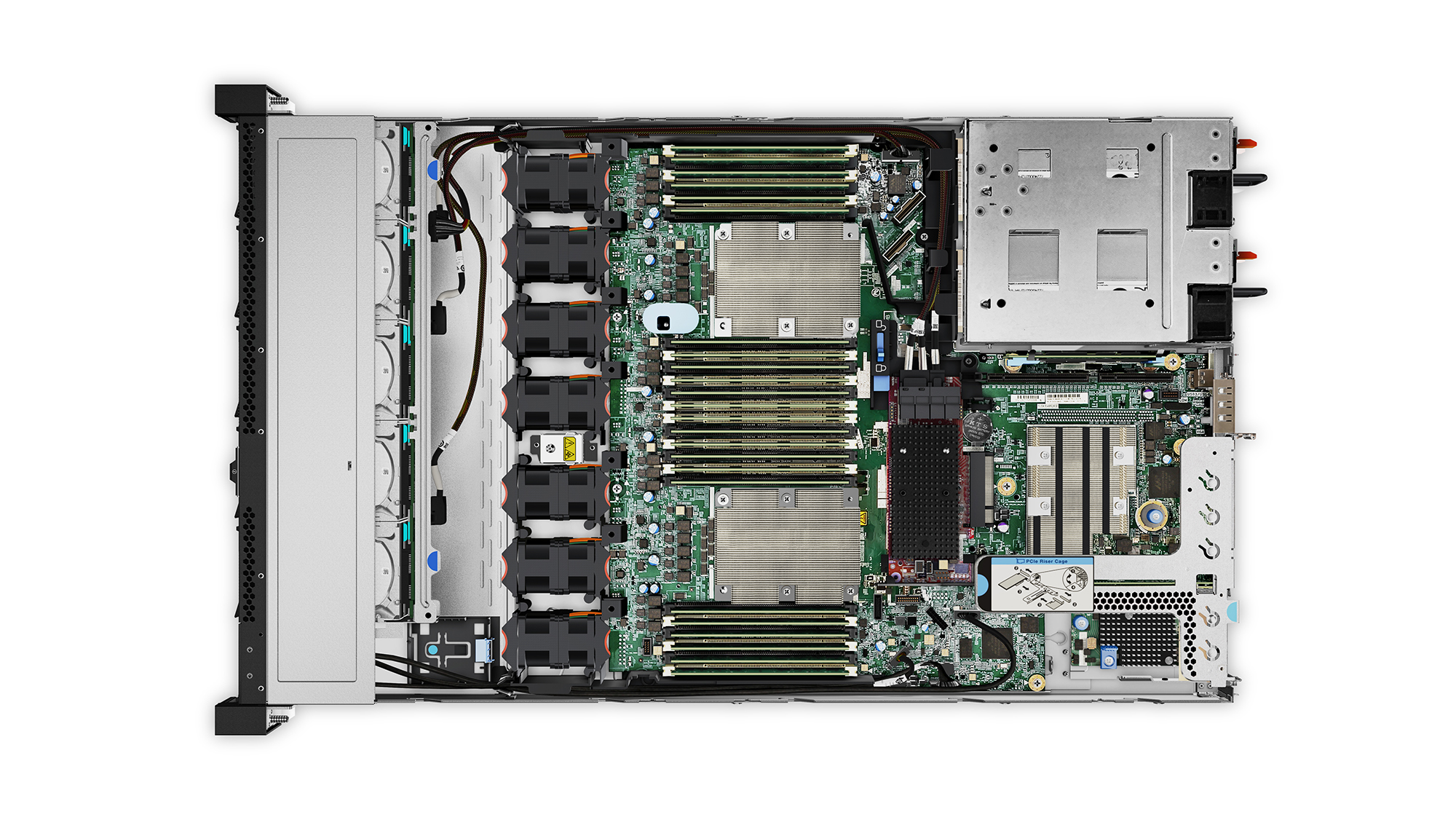
Storage choices
Base systems start with four LFF drive bays, leaving room across the top for an operator panel with VGA, USB 3 and XCC direct access USB 2 ports. We have the eight SSF bay model on review, which includes a larger operator panel to the right with the same number of ports - although unlike Dell, Lenovo doesn't offer an LCD status screen option.
You can order the SR630 with a ten SFF bay backplane, which you'll need if you want to take advantage of the server's embedded NVMe PCI-Express ports. The right-hand group of four bays employ Lenovo's AnyBay carriers, which support SAS, SATA and NVMe drive interfaces.
At the moment, the SR630 supports four NVMe drives, whereas Dell's R640 can manage up to eight. However, Lenovo aims to beat this and a future release of the SR630 will be available with ten NVMe SSD bays.
Lenovo offers a good choice of RAID controllers which snap into a dedicated PCI-Express slot on the motherboard. The price of our system included a RAID 930-8i SAS3 card which supports eight SAS/SATA drives, brings RAID5, 50, 6 and 60 arrays into play and includes 2GB of flash-backed write cache.
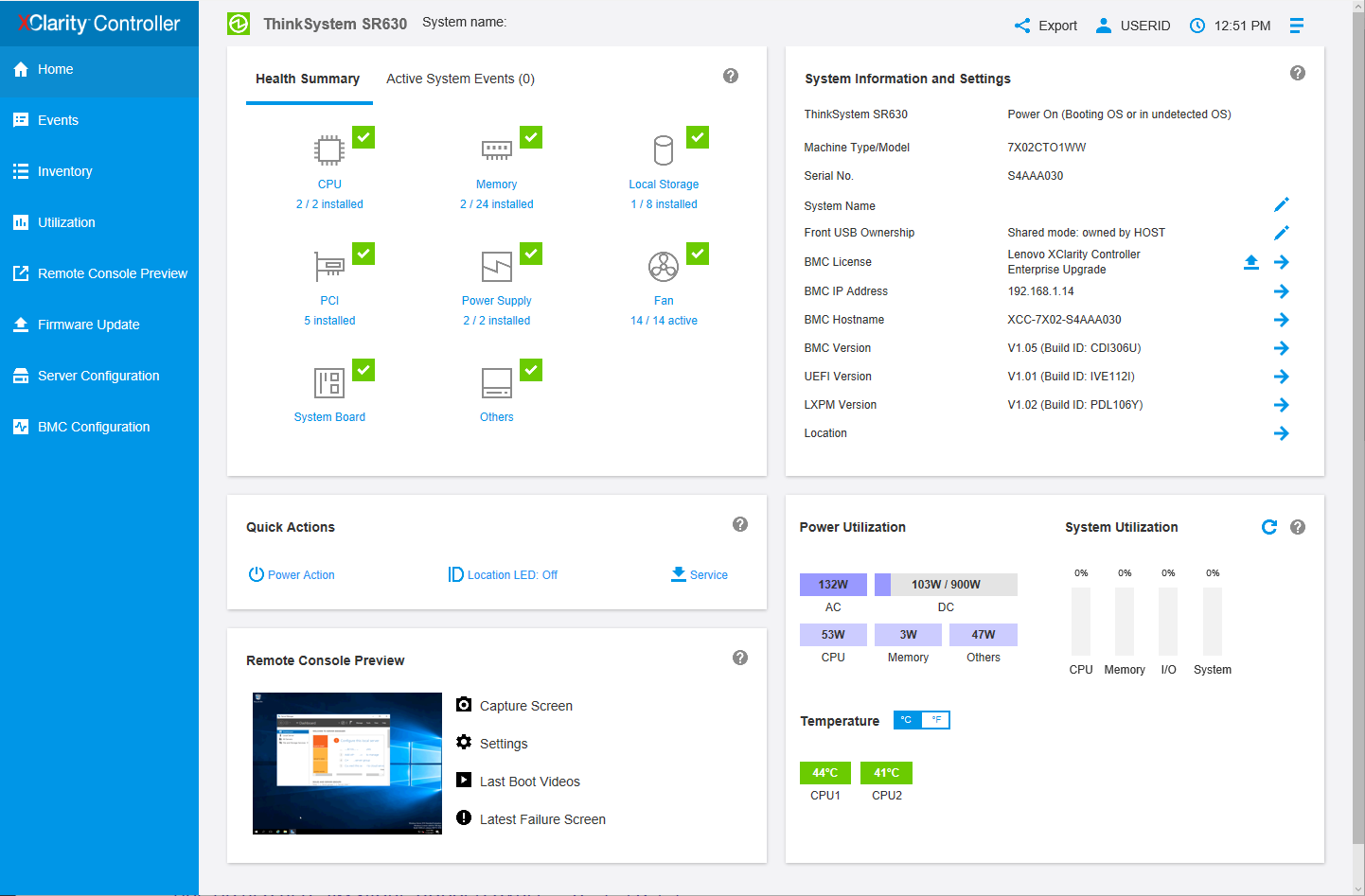
Internal design
Cracking the lid reveals a nicely designed interior with plenty of room to get at all the important bits for routine maintenance and upgrades. Cooling is handled by a bank of seven hot-plug dual-rotor fans behind the drive backplane, which we found to be very quiet during testing.
The RAID card's dedicated slot means all rear expansion slots are free for upgrades and you have a choice of two or three slots. Not that you'll need them though, as the motherboard has an interface at the rear for Lenovo's LOM adapters, with choices including dual and quad Gigabit or 10GbE RJ-45/SFP+ (our system has the quad 10GBase-T LOM included).
Other storage options include a dual M.2 SATA SSD enablement kit, which costs around 350 with two mirrored 128GB modules. You'll need this if you choose CPUs with 200W (Gold 6154) or 205W (Platinum 8168 and 8180) TDPs, as their higher cooling requirements mean you can't have any front drive backplanes, rear HDD bay or GPUs installed.
The review system included dual 8-core 2.1GHz Xeon Silver 4110 CPUs topped off with chunky passive heatsinks, partnered by 32GB of TRuDDR4 memory and powered by a pair of 750W hot-plug PSUs. These CPUs have a low 85W TDP and our power tests measured the server drawing 125W in idle and 199W with all 16 CPU cores at 100% utilization.
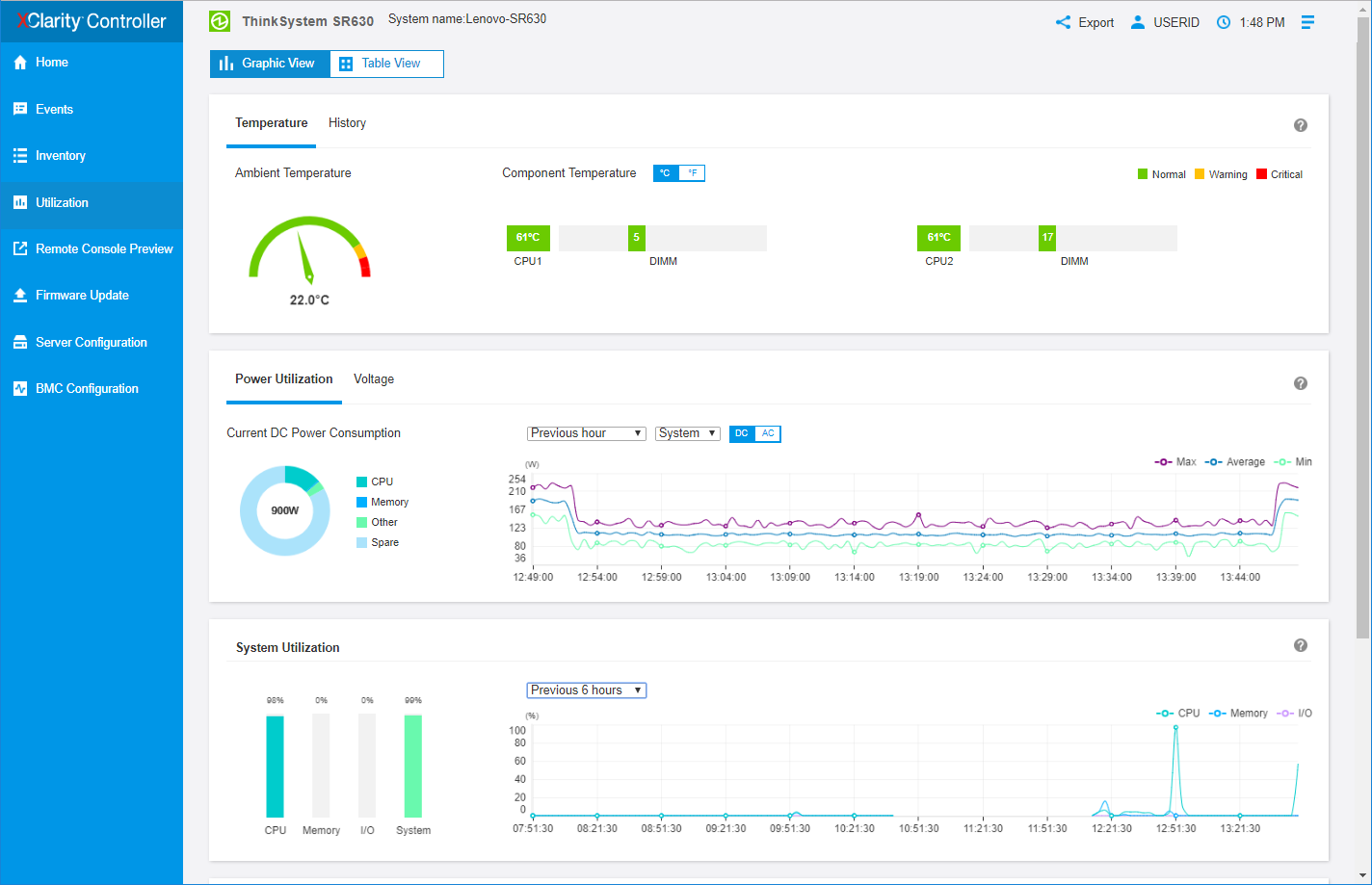
Remote management
Remote management is one area Lenovo really needed to address as the old IMM2 controller from the System x servers is of very limited value. This situation was further exacerbated by the ThinkServer range having a completely different TMM chip.
The XCC controller in all ThinkSystems is vastly superior as the web interface has been completely redesigned and offers a wealth of valuable features. The home page provides everything you need to know about installed hardware, general operations, system usage, temperatures and power consumption.
It puts hardware inventory and firmware upgrade tools at your fingertips while the Utilization page provides detailed graphs of CPU, memory, I/O plus system usage, temperatures and power consumption. The RAID controllers and storage can be directly accessed from the XCC console while the XClarity Provisioning Manager and its automated OS deployment tools helped us install Windows Server 2016 in under 30 minutes.
Our lab runs Lenovo's XClarity Administrator 1.4 as a Hyper-V VM, which spotted the SR630's XCC controller and allowed us to add it to its console for further management, centralized OS deployment and alerting. We also ran the XClarity Mobile iOS app on our iPad and could remotely view the Administrator host and check on our server's status.
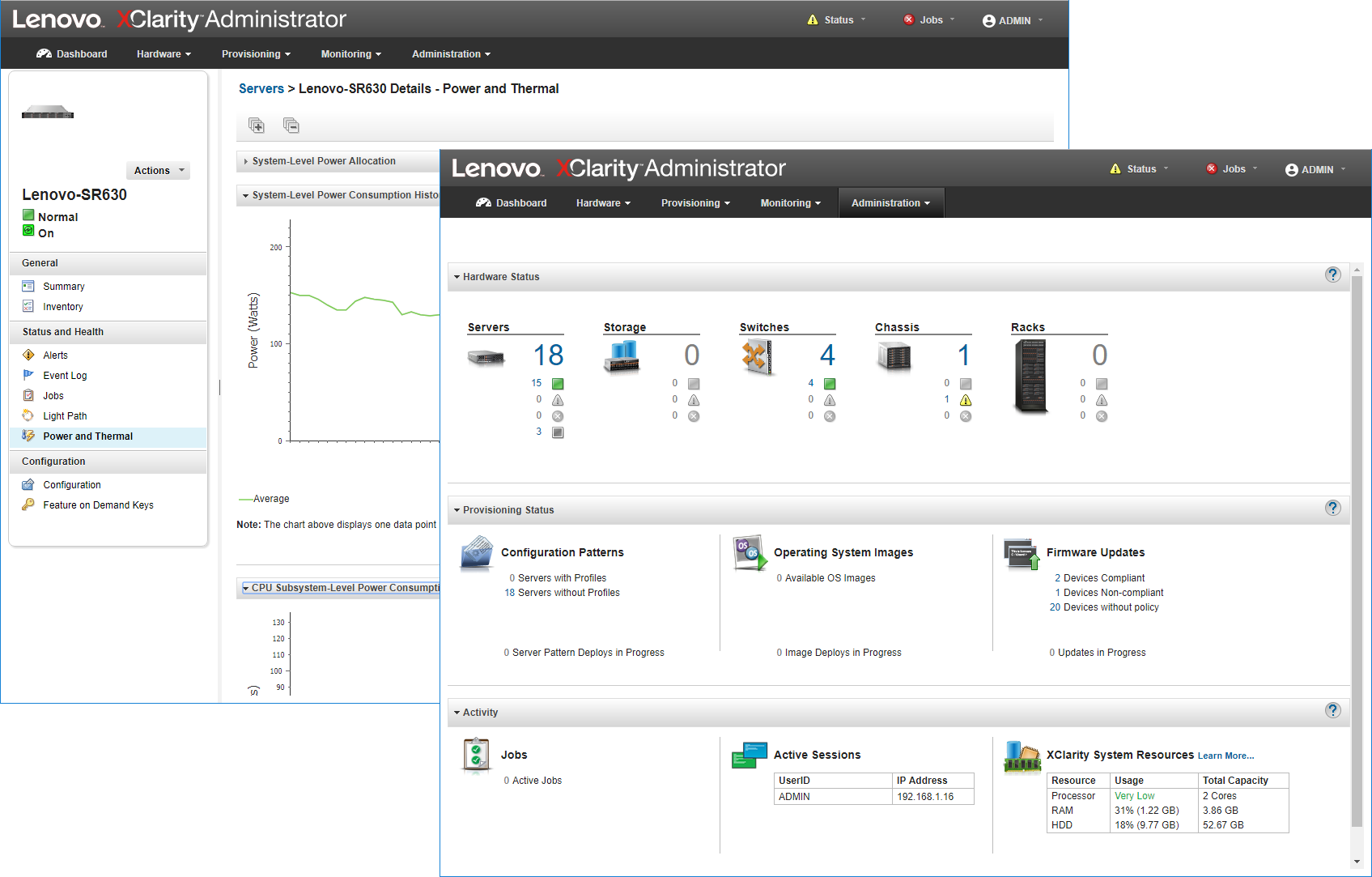
Verdict
Lenovo has pulled out all the stops with the ThinkSystem SR630 and it delivers an impressive range of new and innovative features. Build quality is excellent, it can be expanded to cope with future growth and support staff will welcome the new XClarity Controller and its vastly improved remote management features.
Verdict
A powerful and versatile 1U Xeon Scalable rack server capable of handling the demands of SMBs and enterprises alike
As reviewed:
Get the ITPro daily newsletter
Sign up today and you will receive a free copy of our Future Focus 2025 report - the leading guidance on AI, cybersecurity and other IT challenges as per 700+ senior executives
Dave is an IT consultant and freelance journalist specialising in hands-on reviews of computer networking products covering all market sectors from small businesses to enterprises. Founder of Binary Testing Ltd – the UK’s premier independent network testing laboratory - Dave has over 45 years of experience in the IT industry.
Dave has produced many thousands of in-depth business networking product reviews from his lab which have been reproduced globally. Writing for ITPro and its sister title, PC Pro, he covers all areas of business IT infrastructure, including servers, storage, network security, data protection, cloud, infrastructure and services.
-
 ‘Phishing kits are a force multiplier': Cheap cyber crime kits can be bought on the dark web for less than $25 – and experts warn it’s lowering the barrier of entry for amateur hackers
‘Phishing kits are a force multiplier': Cheap cyber crime kits can be bought on the dark web for less than $25 – and experts warn it’s lowering the barrier of entry for amateur hackersNews Research from NordVPN shows phishing kits are now widely available on the dark web and via messaging apps like Telegram, and are often selling for less than $25.
By Emma Woollacott Published
-
 Redis unveils new tools for developers working on AI applications
Redis unveils new tools for developers working on AI applicationsNews Redis has announced new tools aimed at making it easier for AI developers to build applications and optimize large language model (LLM) outputs.
By Ross Kelly Published
-
 Google layoffs continue with "hundreds" cut from Chrome, Android, and Pixel teams
Google layoffs continue with "hundreds" cut from Chrome, Android, and Pixel teamsNews The tech giant's efficiency drive enters a third year with devices teams the latest target
By Bobby Hellard Published